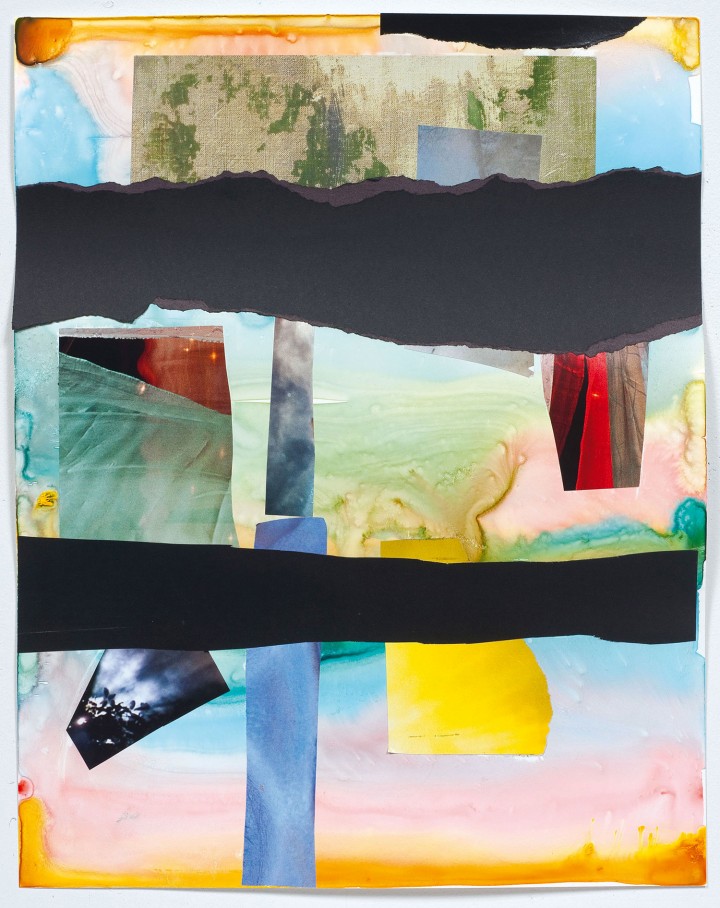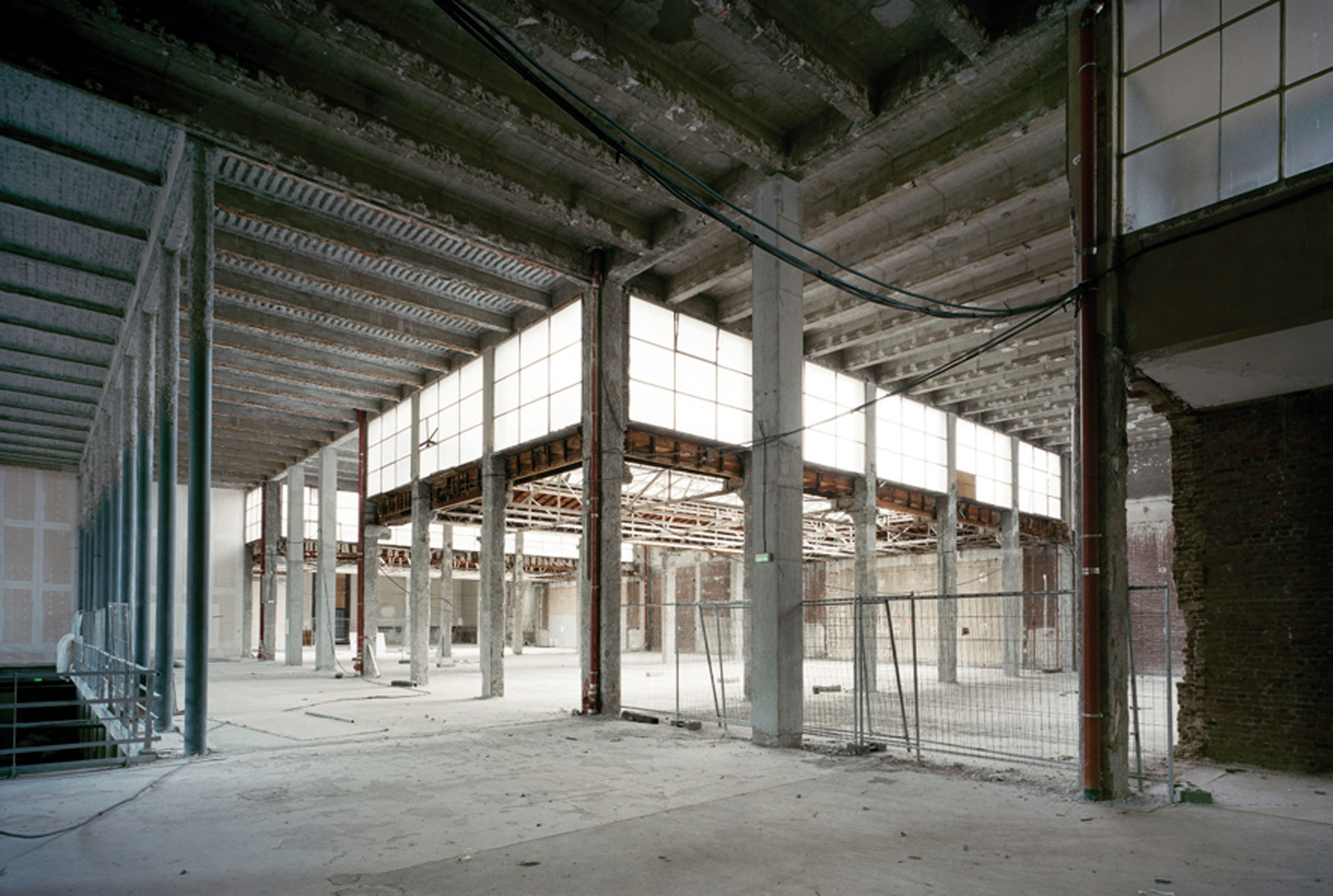
Brett Cody Rogers: You grew up on the Eastern slope of Colorado. How do you think the mountains and planes of Colorado influenced your work? Did the deserts of California remind you of Denver when you first moved to Los Angeles?
Tomory Dodge: I remember as a kid the mountains being omnipresent. They seemed to be very central to the “official culture” of the place. I think for that reason I was kind of fascinated by Eastern Colorado. It’s flat, dry as a bone and generally empty. The mountains are inarguably stunning, but they were a known quantity in a way. Kids grew up knowing the names of all the famous ones. No one thought much about the flat parched wasteland to the east. I kind of found myself drawn there. Not physically but I would fantasize more about that type of landscape for some reason. When I found myself in California I kind of did a similar thing. Instead of being drawn to the coast I was drawn to the desert, and that’s where so many of those early paintings came from.
BCR: Did you blow a lot of things up when you were a kid?
TD: No, my younger brother did more of that. I really spent most of my time drawing, battle scenes and things like that. I did draw a lot of explosions.
BCR: How is paint like an explosion?
TD: I guess for me it kind of comes down to a type of metamorphosis. Material is being transformed from a known recognizable object to an unrecognizable object. Gravity is being suspended or temporarily reversed. I think this is demonstrated to great effect at the end of Michelangelo Antonioni’s film Zabriskie Point (1970) where everyday objects are shown exploding in extremely slow motion. It becomes dreamlike, almost euphoric. In a way those scenes are very painterly to me. There’s long been the association with abstract painting and the disaster.

BCR: I think we would be overlooking something if we did not talk about Gerhard Richter in relation to this new work. More so in the smaller works like Sio’n (2011), August (2011) and Piano Player (2011) than in the larger works. There seems to me to be a real interest on your part in the ability of paint to be both photographic and painterly.
TD: There is a similarity in those paintings to some Richter works; certain earlier abstract paintings of his that seem to be done on top of photographic work especially come to mind. But in my case I don’t think there is an interest in photography. I’ve never made many of what I think of as “proper” photographs, and I stopped using photos as source material years ago. I’m more interested in representation in general. I think in the case of Richter he is really trying to make a photograph out of paint. The mechanical indifference in his work, the blurring, the scraping, is a stand in for the machinery of the camera itself. I’m more interested in the idea of paint being itself as well as something else. Photography enters into it on some level, but it’s not integral to my work.
BCR: For a while now your paintings have possessed a quality that I would associate with backlighting — or, they appear to be internally lit from an artificial source. Rarely do things appear to be front-lit. It seems like there is always a light behind the ‘subject,’ and the subject is almost always the plastic nature of paint. Beyond the chaos there often seems to be a light at the end of the tunnel, be it a sunset, a night sky or an expansive color field. Are you an eternal optimist?
TD: I don’t really feel like much of an optimist usually, but who knows. Again, I think this all goes back to representation. One of the central aspects to traditional Western painting has been the depiction of light. It was central to a lot of the earlier representational paintings I made, and when things started to become more abstract I stayed interested in it. I should say, I never really decided to make abstract paintings as opposed to representational ones. The whole distinction seems less and less relevant really, but it keeps coming up. It’s like that absence of a named object is still a big deal for people. There is something that is really elementally profound about saying a painting depicts a duck and having other people look at it and agree with you. It’s almost like there is a switch in the brain that’s in one position when you connect an image to a named thing and in another position when you don’t. Two different modes of viewing are utilized. I guess I don’t see why that’s necessary. I’ve always wanted to make paintings that present themselves both ways at the same time. That’s why there are often these depictions of light and space that point in one direction and a materiality that points in another.

BCR: Recently I wrote about your work in relation to Abstract Expressionist painters like Philip Guston and Willem de Kooning. I referred to you as a “war-time painter” making work after the “postwar painters.” The main difference being the context that we are now in. But also that your work has a self-consciousness that wasn’t possible in postwar painting because that type of abstraction was in its infancy.
TD: I think that’s generally true for all painting now. It’s not historically accurate, but I often carry around the notion that abstract painting really came into its own during the postwar period and then kind of went away in the ’60s and ’70s, and then began to be reevaluated by painters of later generations. One question I kept having had to do with the potential for contemporary abstraction to be relevant outside its art-historical context. In other words, so much of the relevance of postwar abstraction, and postwar art in general, was its newness. And while there was plenty of existential angst in the equation, the newness embodied the optimism of the time. So much of the impact that this work had was rooted in the sense that it had not been done before or seen before. How does abstraction maintain relevance to its own time when the initial sensation of its impact is gone? It’s a question for painting, but also for art in general. You can make an abstract painting that would be earth-shattering in 1950, but now it may just be a nice painting. I started with what was around. Explosions, failures, mistakes seem to be very central to our age. In the end, I think this self-consciousness is unavoidable.
BCR: I’ve seen the speed with which you make paintings. The sense of urgency to complete a picture in one or two sittings seemed to enhance the chaos in the work. This new work seems the result of you taking more time. Especially in paintings like Sleepless (2011) where the mirroring effect of manually copying the paint marks from one half of the painting to the other seems to take more time and organization.
TD: I guess there is more organization, but not much. The process has slowed down a lot. They take much longer to do now. I would hate to think that they seem more orderly or less chaotic because of that. To me they seem more so. Hopefully I’ve been able to integrate that sense of chaos into the painting process itself to a much deeper degree so it’s not just dependent on something like speed. The whole mirroring process in the diptychs has a lot to do with that. One of the reasons I started working that way was that I saw it as a way to really slow the work down. It’s takes longer when you have to do everything twice of course. But I also liked the fact that I could work slowly and still make nothing but mistakes. The idea of copying a gestural mark is absurd on many levels, and in reality it’s not really possible. The results are paintings that simultaneously propose to be symmetrical, but are made in a way that guarantees that they won’t ever really be.





